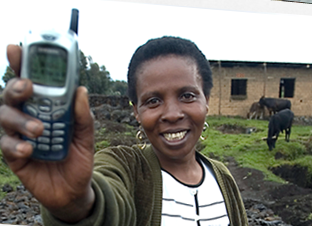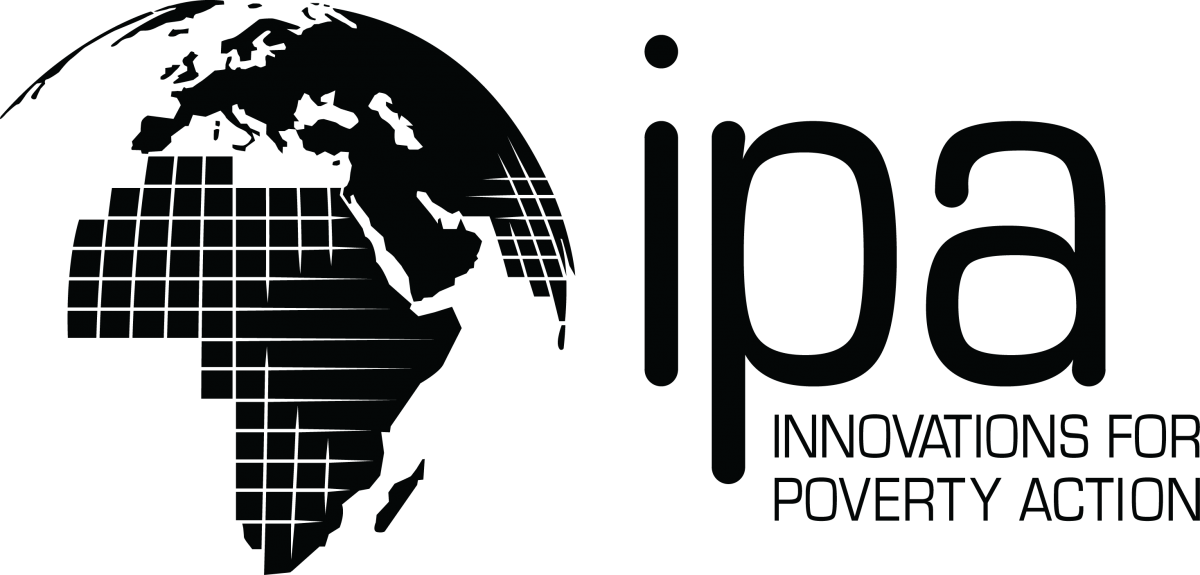
When the Poor Need Information, Mobile Phones Can Be the Right Tool for the Job >
It is important that we take the lessons we have learned from micro-credit and apply them to any new poverty intervention. I got to thinking about this after reading an article titled: "Mobile Phones Will Not Save the Poorest of the Poor." In general, the micro-credit industry focused too much on the existence of micro-credit and not enough on the ability of micro-credit to improve the quality of life of the poor. Too many made the assumption that more is better.
 The difficulties of cell phone use in development work mentioned in the article are all accurate. However, the most cogent response is that we need to use the most appropriate tool for the job. At Grameen Foundation, we use cell phones not to “save the poorest of the poor” but as a powerful tool for collecting and disseminating information and services -- including financial services, livelihoods information and micro-franchise operations to name a few. And, we do this through trusted intermediaries -- humans that are carrying the cell phones and working directily with poor clients. Mobile technology helps us address the “last mile” problem facing so many organizations that are trying to reach isolated or dispersed populations.
The difficulties of cell phone use in development work mentioned in the article are all accurate. However, the most cogent response is that we need to use the most appropriate tool for the job. At Grameen Foundation, we use cell phones not to “save the poorest of the poor” but as a powerful tool for collecting and disseminating information and services -- including financial services, livelihoods information and micro-franchise operations to name a few. And, we do this through trusted intermediaries -- humans that are carrying the cell phones and working directily with poor clients. Mobile technology helps us address the “last mile” problem facing so many organizations that are trying to reach isolated or dispersed populations.
Relative to the issue of the profit motive of telcos or other mobile financial service providers, the article points out that “fee-based business models are geared toward maximizing revenue, which translates to a stunning level of resource extraction from poor communities.” It is the responsibility of development organizations -- the poverty experts -- to help these companies build responsible business models.
Profit is not a proxy for success. This is another lesson that we have learned from micro-credit. Though financial sustainability is essential, an unchecked profit motive can be corrosive to positive outcomes for the poor -- and disastrous for the reputation of businesses providing the services. There is a tight band of profit optimization within which organizations need to operate to ensure that they implement effective and sustainable poverty interventions.
Assuming that the market will find the right place by itself does not work. We have to work hard to find the right balance for all stakeholders. Additionally, we have to put the cost in context by taking a look at the additional cost of providing service to the poor and the extent that it is offset by the value of the service. Again, we must work closely with these service providers to help them build sustainable and responsible services. Grameen Foundation has had good success doing this with MTN in Uganda.
As we dig in to the business models for these services, one of the open questions for mobile phone use in development work is, can we effectively serve the poor without involving a trusted intermediary -- a human who is using the phone to work directly with the poor? One of the assumptions of cell phone use in development is that the phone is useful because it makes providing services to the poor less expensive by removing the need for an intermediary. Though this may be effective in some scenarios, it is still very much an open question if this disintermediation can be be used broadly throughout development work.
Ultimately, the cell phone is meaningless -- literally, it has no meaning. The cell phone is a tool; a conduit for information. Just as a building contractor uses a hammer to knock in nails to build a house, we use cell phones to move information that is critical to improving the quality of life of the poor. If the tool does not work to enable the intervention that achieves the goal, then we shouldn’t use it.
The poor need better information. We need better information about the poor. Grameen Foundation is helping the poor access life-changing, real-time information, and is helping those who help the poor deal effectively with information they can gather in return. Sometimes we even use paper! That said, I realize the article above focuses on mobile financial services. What I am trying to say is that mobile financial services are useful where the mobile phone is the best way to knock in the nail to build the house. A different tool should be used where it isn’t
Written by Steve Wright, Director of the Social Performance Management Center at Grameen Foundation
- Connectez-vous ou inscrivez-vous pour publier un commentaire


